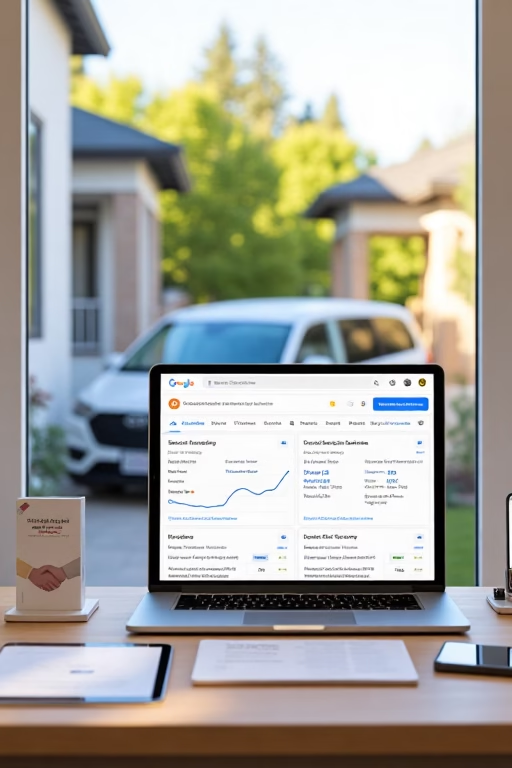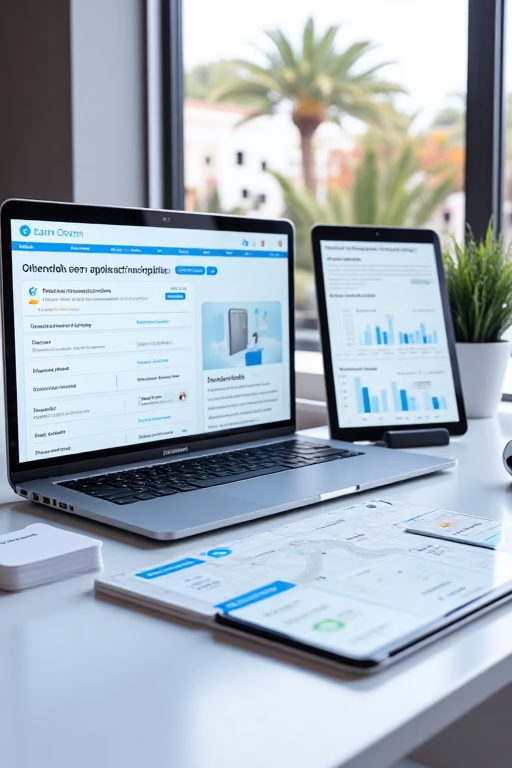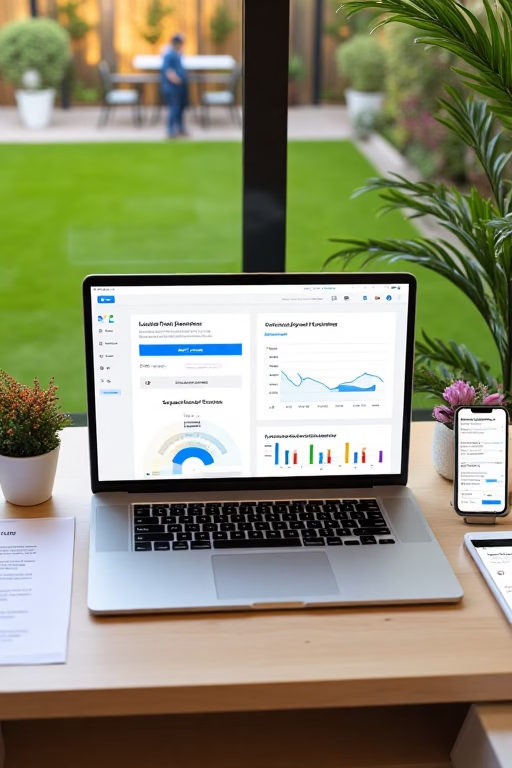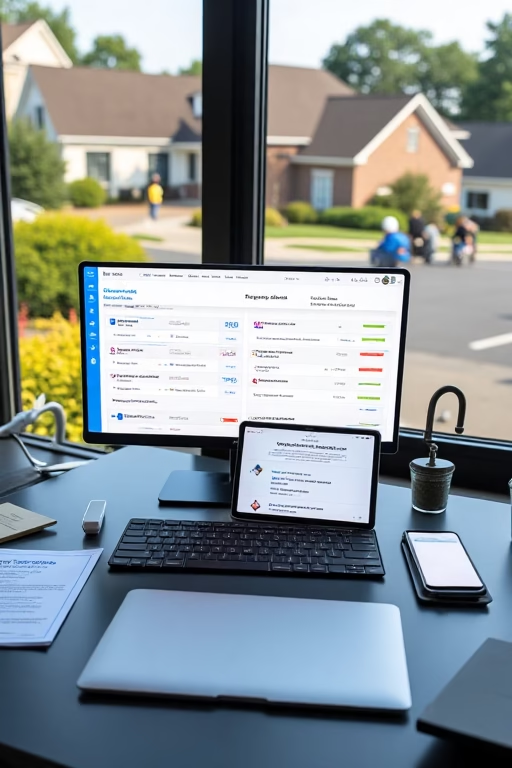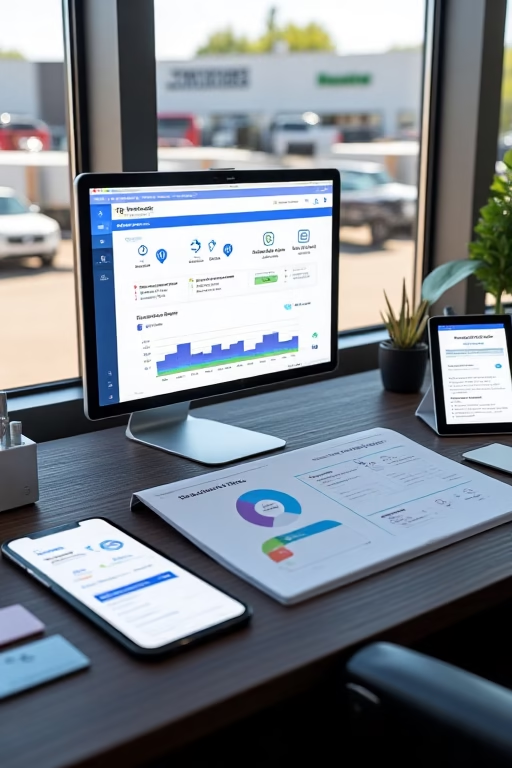How to Sell More Home Cleaning Services with Lead Generation: Google Ads & Referrals
How to Sell More Home Cleaning Services with Lead Generation: Google Ads & Referrals
Your Cleaning Business Growth Blueprint by Market Wiz
Table of Contents
- Introduction: The Dual Power of Google Ads & Referrals
- 1. Understanding Your Cleaning Service Audience
- 1.1 Busy Professionals
- 1.2 Families & Pet Owners
- 1.3 Seniors & Mobility‑Challenged
- 1.4 Commercial & Airbnb Hosts
- 2. Optimizing Your Website for Lead Generation
- 2.1 Clear Service Pages
- 2.2 Trust Elements & Social Proof
- 2.3 Conversion‑Focused CTAs & Forms
- 3. Google Ads Strategies for Cleaning Leads
- 3.1 Local Keyword Research
- 3.2 Ad Copy & Extensions
- 3.3 Geo‑Targeting & Scheduling
- 3.4 Landing Page Alignment & A/B Testing
- 4. Building a Robust Referral Program
- 4.1 Incentive Structures
- 4.2 Automated Referral Requests
- 4.3 Partnering with Local Businesses
- 4.4 Tracking & Attribution
- 5. Lead Magnets & Value Offers
- 5.1 Free Cleaning Audits
- 5.2 Seasonal Discounts & Bundles
- 5.3 Downloadable Cleaning Checklists
- 5.4 Email‑Gated Maintenance Tips
- 6. Streamlined Lead Capture Techniques
- 6.1 Pop‑Ups & Slide‑Ins
- 6.2 Chat Widgets & Click‑to‑Call
- 6.3 Minimalist Contact Forms
- 7. Nurturing Leads via Email & SMS
- 7.1 Welcome Sequences
- 7.2 Promotional Drips
- 7.3 SMS Reminders & Follow‑ups
- 8. Measuring & Optimizing Performance
- Conclusion & Next Steps
- 25 Frequently Asked Questions
- 25 Extra Keywords
Introduction: The Dual Power of Google Ads & Referrals
Combining targeted Google Ads with a strong referral network accelerates lead flow and credibility for home cleaning businesses. Google Ads puts your service in front of homeowners searching for “house cleaning near me,” while referrals leverage existing client trust to drive new bookings. This guide from Market Wiz outlines how to optimize both channels for maximum growth.
1. Understanding Your Cleaning Service Audience
1.1 Busy Professionals
Time‑pressed individuals value reliability and flexibility. Highlight same‑day availability and online booking options.
1.2 Families & Pet Owners
Parents and pet lovers look for eco‑friendly, non‑toxic products. Showcase family‑safe cleaning and pet‑friendly credentials.
1.3 Seniors & Mobility‑Challenged
Older homeowners appreciate trustworthy, background‑checked staff. Emphasize insured, certified cleaners and easy scheduling.
1.4 Commercial & Airbnb Hosts
Property managers and short‑term rental owners need consistent, high‑turnover services. Offer priority slots and bulk‑booking discounts.
2. Optimizing Your Website for Lead Generation
2.1 Clear Service Pages
Create dedicated pages for recurring cleaning, deep cleaning, move‑in/move‑out, and specialty services—with concise descriptions and starting prices.
2.2 Trust Elements & Social Proof
Feature real client testimonials, star ratings, and company accreditations prominently on homepage and service pages.
2.3 Conversion‑Focused CTAs & Forms
Use action‑oriented buttons like “Get Your Free Quote” and minimize form fields to name, address, and email or phone.
3. Google Ads Strategies for Cleaning Leads
3.1 Local Keyword Research
Target high‑intent phrases: “house cleaning services [city],” “move‑out cleaning near me,” and “same‑day maid service.”
3.2 Ad Copy & Extensions
Write compelling headlines (“Sparkling Homes in 24 hrs”) and use callout extensions (Free Estimate, Licensed & Insured).
3.3 Geo‑Targeting & Scheduling
Limit bids to ZIP codes in your service area and schedule ads during peak booking hours—weekdays 8 am–6 pm.
3.4 Landing Page Alignment & A/B Testing
Ensure ad messages match landing page content. Test different headlines, images, and form layouts to improve Quality Score and conversions.
4. Building a Robust Referral Program
4.1 Incentive Structures
Offer discounts or free add‑on services for both referrer and referee, creating a win‑win for existing clients.
4.2 Automated Referral Requests
After each service, trigger an email or SMS asking satisfied customers to refer a friend in exchange for rewards.
4.3 Partnering with Local Businesses
Collaborate with realtors, property managers, and pet groomers to exchange leads and cross‑promote services.
4.4 Tracking & Attribution
Use unique referral codes and track conversions in your CRM to measure program ROI and optimize incentives.
5. Lead Magnets & Value Offers
5.1 Free Cleaning Audits
Offer a no‑obligation walkthrough to assess cleaning needs—capture lead info before delivering your audit report.
5.2 Seasonal Discounts & Bundles
Promote spring deep‑clean packages or holiday prep bundles with limited‑time savings to spur quick signups.
5.3 Downloadable Cleaning Checklists
Provide homeowners with a PDF checklist (“10 Spots You Miss on Spring Clean”) in exchange for email addresses.
5.4 Email‑Gated Maintenance Tips
Share monthly tips via email newsletter—“Keep Your Home Allergen‑Free”—to stay top of mind and nurture cold leads.
6. Streamlined Lead Capture Techniques
6.1 Pop‑Ups & Slide‑Ins
Trigger a slide‑in offer when visitors scroll halfway down or show exit intent, e.g. 10% off your first clean.
6.2 Chat Widgets & Click‑to‑Call
Implement a live chat that can answer FAQs and book estimates immediately. Ensure phone numbers are clickable on mobile.
6.3 Minimalist Contact Forms
Keep initial forms to 3 fields (name, phone, zip code) to maximize completion; follow up to gather project details.
7. Nurturing Leads via Email & SMS
7.1 Welcome Sequences
Send an immediate thank‑you email with a summary of requested services and next steps.
7.2 Promotional Drips
Over the next week, share special offers, service highlights, and customer success stories to build trust.
7.3 SMS Reminders & Follow‑ups
Use SMS to confirm appointments, send same-day reminders, and offer last‑minute slots at a discount.
8. Measuring & Optimizing Performance
- Click‑Through Rate (CTR): Monitor Google Ads CTR to refine ad copy and keywords.
- Cost per Lead (CPL): Calculate by channel—SEO, PPC, referrals—to allocate budget effectively.
- Lead‑to‑Booking Ratio: Track how many leads convert into scheduled cleanings.
- A/B Testing Cadence: Test one element at a time—headlines, forms, CTAs—and iterate weekly.
Conclusion & Next Steps
Generating homeowner leads for your cleaning service requires both paid search precision and word‑of‑mouth momentum. Start by auditing your Google Ads campaigns and setting up a simple referral incentive. Complement that with engaging lead magnets on your site, streamlined capture flows, and consistent follow‑up. Measure, optimize, and you’ll watch your calendar fill faster than ever before.
25 Frequently Asked Questions
1. How much should I budget for Google Ads?
Depend on your market size; start with \$500–\$1,000/month, then scale based on CPL and ROI.
2. What keywords perform best?
High‑intent phrases like “house cleaning near me,” “deep clean cost,” and “move‑out cleaning [city].”
3. How do I track referrals?
Use unique referral codes, track in your CRM, and automate reward fulfillment.
4. Are pop‑ups annoying?
When used sparingly with clear value, they boost opt‑ins without harming UX.
5. How many ad variations should I test?
Test 2–3 ad copy variations per campaign and iterate based on CTR and conversions.
6. What incentive works best?
Discounts on first clean (10–20%) or free add‑on services like fridge cleaning.
7. Should I use SMS?
Yes—SMS open rates exceed 90% and are ideal for booking reminders.
8. How soon follow up leads?
Within 5 minutes for paid leads; within 1 hour for organic/referral leads.
9. What’s a good CPL?
Aim for \$10–\$20 per lead, depending on package size and lifetime value.
10. How often email leads?
3–5 emails over one week, then switch to monthly tips and offers.
11. How to qualify leads?
Use form questions or chatbot qualifiers—service type, home size, frequency.
12. Can I integrate chatbots?
Yes—many platforms offer plugins that connect chat to your CRM and booking system.
13. What trust badges matter?
Insured/licensed icons, BBB accreditation, and real customer testimonials.
14. How to reduce no‑shows?
Send SMS reminders 24 hours and 1 hour before appointments, with easy reschedule links.
15. Should I include pricing online?
Offering starting prices builds transparency—e.g., “From \$99 for a 2‑room clean.”
16. How to use negative keywords?
Exclude irrelevant searches like “cleaning jobs” or “vacuum cleaner repair.”
17. What’s the role of social proof?
Reviews and before/after photos increase trust and conversion by up to 15%.
18. How do I measure ROI?
Compare revenue from booked cleanings to ad/referral program spend.
19. What’s progressive profiling?
Collect minimal info up front, then ask for details in follow-up emails or chats.
20. How often refine bids?
Weekly—adjust bids on high-converting keywords and pause low performers.
21. Can I retarget website visitors?
Yes—use Google and Facebook retargeting to re-engage visitors who didn’t convert.
22. What’s an ideal ad schedule?
Run ads weekdays 8 am–6 pm when homeowners plan services; test weekends for gap opportunities.
23. How to set up referral tracking?
Use UTM parameters for referral links and track conversions in Google Analytics and your CRM.
24. Should I offer subscription plans?
Yes—monthly or quarterly cleaning plans improve LTV and stabilize lead flow.
25. What’s the first step?
Audit your current Google Ads account and launch a simple referral email to existing clients.
25 Extra Keywords
- home cleaning Google Ads
- cleaning service referrals
- move‑out cleaning leads
- deep clean promotion
- local maid service SEO
- exit intent cleaning pop‑up
- cleaning chatbot integration
- SMS booking reminders cleaning
- cleaning discount code email
- referral program cleaning
- cleaning lead magnet checklist
- seasonal cleaning bundles
- Google Local Service Ads cleaning
- housekeeping lead capture
- cleaning scheduled drips
- CPA cleaning services
- ad extensions cleaning ad
- negative keywords cleaning
- cleaning landing page design
- progressive profiling cleaning
- cleaning service testimonials
- cleaning website optimization
- cost per lead benchmark
- cleaning conversion rate
- Market Wiz cleaning guide
How to Sell More Home Cleaning Services with Lead Generation: Google Ads & Referrals Read More »


